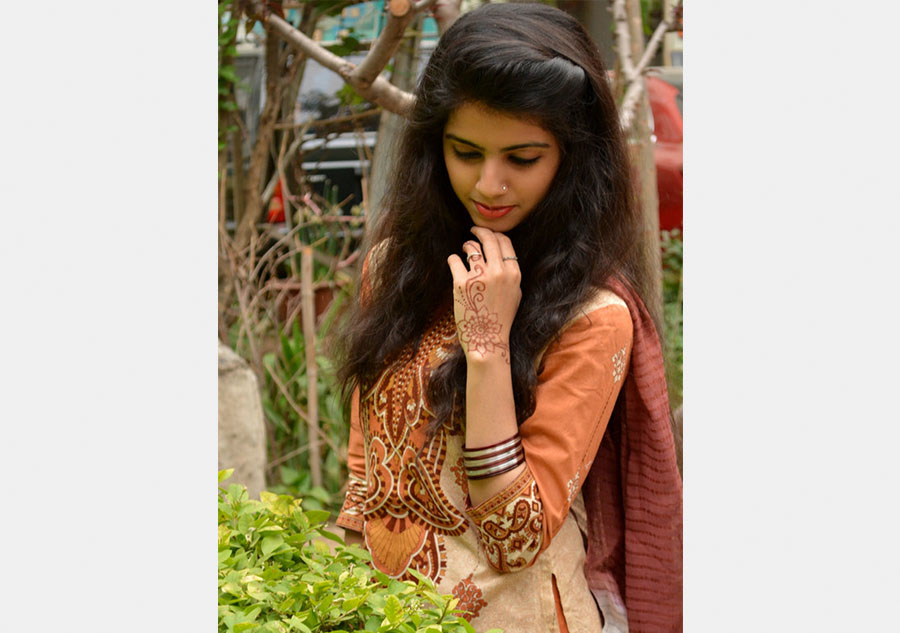







 |
|
Hafsa Azam poses for a photo showing her work on her own hands.[Photo provided to China Daily] |
Dye with an herbal fragrance makes its mark in China.
One of Hafsa Azam's first artistic canvases was her mother's hands. On those hands she dabbed the dye henna, and over the next two decades she would continue to practice that art, become a highly skilled professional thousands of kilometers from her homeland.
In 1998, when she was 6, her family migrated from Pakistan to China, and Azam began primary school. As she acclimatized to her adopted country her love for her own culture never faded, and she continued practicing henna drawing on her family and friends.
Henna is a dye prepared from the flowering plant Lawsonia inermis and is commonly used to create temporary body art on skin. It can also be used to dye hair and fingernails. The body art is also known as mehndi. The dye was used for cosmetic purposes primarily in ancient India, and these days the art is practiced and enjoyed by many around the world.